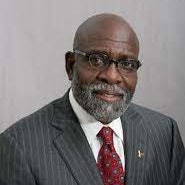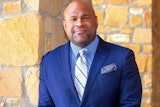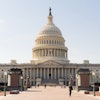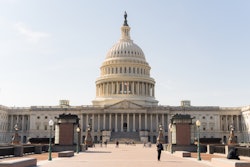 Dr. Charlie Nelms, senior scholar at the American Association of State Colleges and Universities and senior consultant for the Association of Governing Boards
Dr. Charlie Nelms, senior scholar at the American Association of State Colleges and Universities and senior consultant for the Association of Governing Boards
Retired university presidents are sometimes still active at the institution that they once led, such as teaching courses as a tenured faculty member. During leadership transitions, that can mean a new president must strike a careful balance between their vision and the prior president's institutional memory.
“For the most part, I don’t think this is a problem, though it depends on the prior president’s level of involvement in the institution,” said Dr. Robert T. Palmer, an associate professor and chair in the department of educational leadership and policy studies at Howard University. “A prior president staying around can be a role model for current students by teaching a course or by serving the institution in some other beneficial capacity. I think this becomes a challenge if that person gets really involved in trying to sway the administration, to exert influence without allowing the new president to give life to his or her vision.”
Dr. Charlie Nelms has held three university presidencies, including as the chancellor of North Carolina Central University. Like Palmer, Nelms stressed the importance of prior presidents stepping back and making space for their successors — and, for successors, of respecting past presidents’ choices. Nelms is a senior scholar at the American Association of State Colleges and Universities, and he is a senior consultant for the Association of Governing Boards.
“I must say that in my three presidencies, I have never had a situation where the prior president was still involved with the institution, especially in any inappropriate way,” said Nelms. “And one piece of advice I give to all new presidents is this: never get yourself in a position of criticizing your predecessor. You don’t know what her, his, or their situation was — and whatever it was, it wasn’t what you’re dealing with now. I’m sure those people did the best they could under the circumstances they were dealt — just like you are doing now.”
H. Patrick Swygert, president emeritus and professor of law at Howard University, agreed. From 1995 to 2008, Swygert served as the president of Howard, and he remains committed to the university as well as the presidents who succeeded him. Recently, Swygert led an effort to secure a $16.8 million award from PNC Bank for Howard's School of Business, funding which established the Howard University and PNC Bank National Center for Entrepreneurship.
"Every incoming or new president has his or her own vision and is committed to that vision," he said. "And the one thing that an outgoing president in my view should not do is to in any way interfere with that vision."
Dr. Alvin Schexnider, the former chancellor of Winston-Salem State University and currently a senior consultant at the Association of Governing Boards, additionally noted that an institution's board can play a big role in ensuring a smooth leadership transition.
“I think a lot depends on the institution itself,” he said. “I know of universities where the board is pretty intentional about availing itself of institutional knowledge or institutional memory, tapping into the kinds of relationships the institution has developed over the years. And a former president can be critical in helping his or her successor build on those connections.”
Schexnider explained that a new president’s first months on the job are often about learning that institution’s particular culture. A president listens and observes what can feel foreign, and a prior president around campus can act almost like a translator should the new president seek help.
But Schexnider as well as Palmer emphasized that it is best for the new president to take that initiative to ask for counsel from the prior president — rather than a president emeritus stepping on toes, whether inadvertently or not.
“The new president should still be mindful and open because the old president may have encountered some roadblocks due to their own making,” said Palmer, who studies higher education leadership. “So, as the current president, you can get some advice, but you still need to have the mental wherewithal to act with your own gut, to be courageous in taking the lead.”
Dr. Felecia Commodore, an assistant professor of educational foundations and leadership at Old Dominion University, also researches higher education leadership. She pointed out that some transitions can be more challenging than others.
“I think it’s a delicate situation more so when there was a longstanding or very beloved president prior to the new president — because the reality is that this new person is coming in who, in one way or another, is inheriting someone else’s people,” said Commodore. “There is also a sort of grief that a campus can go through with the retirement of a beloved or longstanding president. So, a new person comes in, and people are often excited, but they are navigating that hope alongside this grief as well.”
Commodore added that when an institution becomes so closely associated with one past president, then the university risks being seen as “an extension of that personality.” This can make leadership shifts tough, potentially harming the institution’s longevity.
Some former presidents are intentional about relocating to another city, far from their former institution.
Dr. Walter M. Kimbrough, who recently stepped down as president of Dillard University in New Orleans after a decade on the job, said that he is remaining in NOLA — at least for now.
"“I’m going to be around, just as an active citizen,” he told columnist Will Sutton, adding that in between his work as executive in residence at the University of Southern California’s (USC’s) Race and Equity Center, he stands ready to assist the school's new president, Dr. Rochelle Ford.
“I’m the 24/7 helpline,” he said. “You only have one president at a time.”
To Nelms, this distinction between the institution and individual at its helm is key. Whether the prior president is still around campus or not, understanding the greater purpose of the job can make all the difference.
“The moral of the story is this: institutions are greater than individuals,” he said. “And each person gets a chance to serve that institution during their watch. But what we need to be careful about is to not end up conflating their watch with our watch.”
Rebecca Kelliher can be reached at [email protected].
















